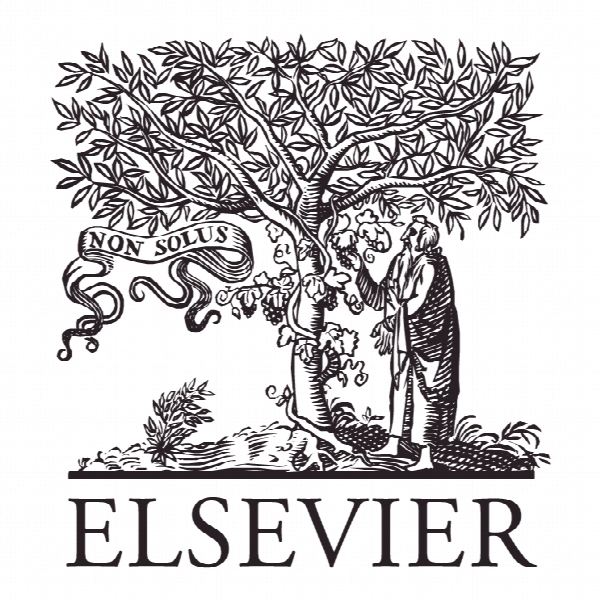مدیریت ارتباط با مشتری در بازارهای در حال ظهور – guanxi به عنوان محرک وفاداری مشتری چینی Managing customer relationships in the emerging markets – guanxi as a driver of Chinese customer loyalty
- نوع فایل : کتاب
- زبان : انگلیسی
- ناشر : Elsevier
- چاپ و سال / کشور: 2018
توضیحات
رشته های مرتبط مدیریت
گرایش های مرتبط بازاریابی، مدیریت منابع انسانی
مجله تحقیقات تجاری – Journal of Business Research
دانشگاه Technological and Higher Education Institute of Hong Kong – Hong Kong
شناسه دیجیتال – doi http://dx.doi.org/10.1016/j.jbusres.2017.07.017
منتشر شده در نشریه الزویر
کلمات کلیدی انگلیسی Guanxi, Relationship marketing, Customer loyalty, Word-of-mouth, Calculative trust, Social ties
گرایش های مرتبط بازاریابی، مدیریت منابع انسانی
مجله تحقیقات تجاری – Journal of Business Research
دانشگاه Technological and Higher Education Institute of Hong Kong – Hong Kong
شناسه دیجیتال – doi http://dx.doi.org/10.1016/j.jbusres.2017.07.017
منتشر شده در نشریه الزویر
کلمات کلیدی انگلیسی Guanxi, Relationship marketing, Customer loyalty, Word-of-mouth, Calculative trust, Social ties
Description
1. Introduction Relationship marketing is an important topic in marketing theory because of its crucial role in helping develop and maintain mutually profitable and sustainable relationships among buyers and sellers (Gruen, Summers, & Acito, 2000; Morgan & Hunt, 1994; Samaha, Beck, & Palmatier, 2014). In this context, a recent meta-analysis of 170 studies in 36 countries reveals significant differences in the effects of relational mediators such as trust and commitment across different cultures (Samaha et al., 2014). However, there is not much research into the underlying socio-cultural mechanisms that may drive these differences, such as some unique cultural factors that drive relationship marketing process around the world (Gap 1). Interestingly, there is also a large body of research on guanxi, a social exchange mechanism built on mutual favors, which is considered an important strategic asset by most Chinese people and businesses (Davies, Leung, Luk, & Wong, 1995; Park & Luo, 2001). Guanxi has played a major role in the Chinese society throughout its long history (Alston, 1989) and the modernization and globalization of the Chinese economy in the last few decades has even forced multinational companies to look for ways to establish their own guanxi networks in China (Davies et al., 1995). However, despite some attempts to compare the concepts of relationship marketing and guanxi (e.g., Ambler, Styles, & Xiucun, 1999; Leung, Lai, Chan, & Wong, 2005; Shaalan, Reast, Johnson, & Tourky, 2013; Wong & Chan, 1999), the exact roles played by guanxi and its underlying dimensions in mainstream relationship marketing, particularly their impact on customer loyalty in the services context, are still not very clear or well-established (Gap 2). People’s Republic of China (PRC) is the most populous country in the world and the largest economy, as measured on purchasing power parity (PPP) basis, well ahead of United States and European Union (Central Intelligence Agency, 2016). China is also culturally very different from the Western countries, with strong collectivistic values and high long-term orientation (Hofstede, 2001). Hence, it is not surprising to see that international relationship marketing studies find Chinese firms twice as effective in using relationship marketing to drive performance as those in the United States (e.g., Samaha et al., 2014). However, despite growing evidence about the differences in the business and cultural practices between China and the rest of the world (Sharma, 2010), past research on relationship marketing, especially its impact on customer loyalty, has generally ignored China and focused on Western cultures (Sharma, 2011) (Gap 3). Finally, past research on the role of guanxi in the Chinese context has mainly focused on buyer-seller relationships in the business-to business (B2B) context and on organizational performance outcomes such as sales growth (e.g., Barnes, Leonidou, Siu, & Leonidou, 2015; Barnes, Yen, & Zhou, 2011; Leung, Chan, Lai, & Ngai, 2011; Park & Luo, 2001; Yang & Wang, 2011). Samiee, Chabowski, and Hult’s (2015) meta-analysis of international cross-border relationship marketing studies also shows that most studies focus on B2B context with very few studies on business-to-consumer (B2C) relationships. Hence, it is not clear to what extent the same relationship marketing constructs and models can apply in B2B and B2C contexts, and what could be the theoretical differences between them (Gap 4).


